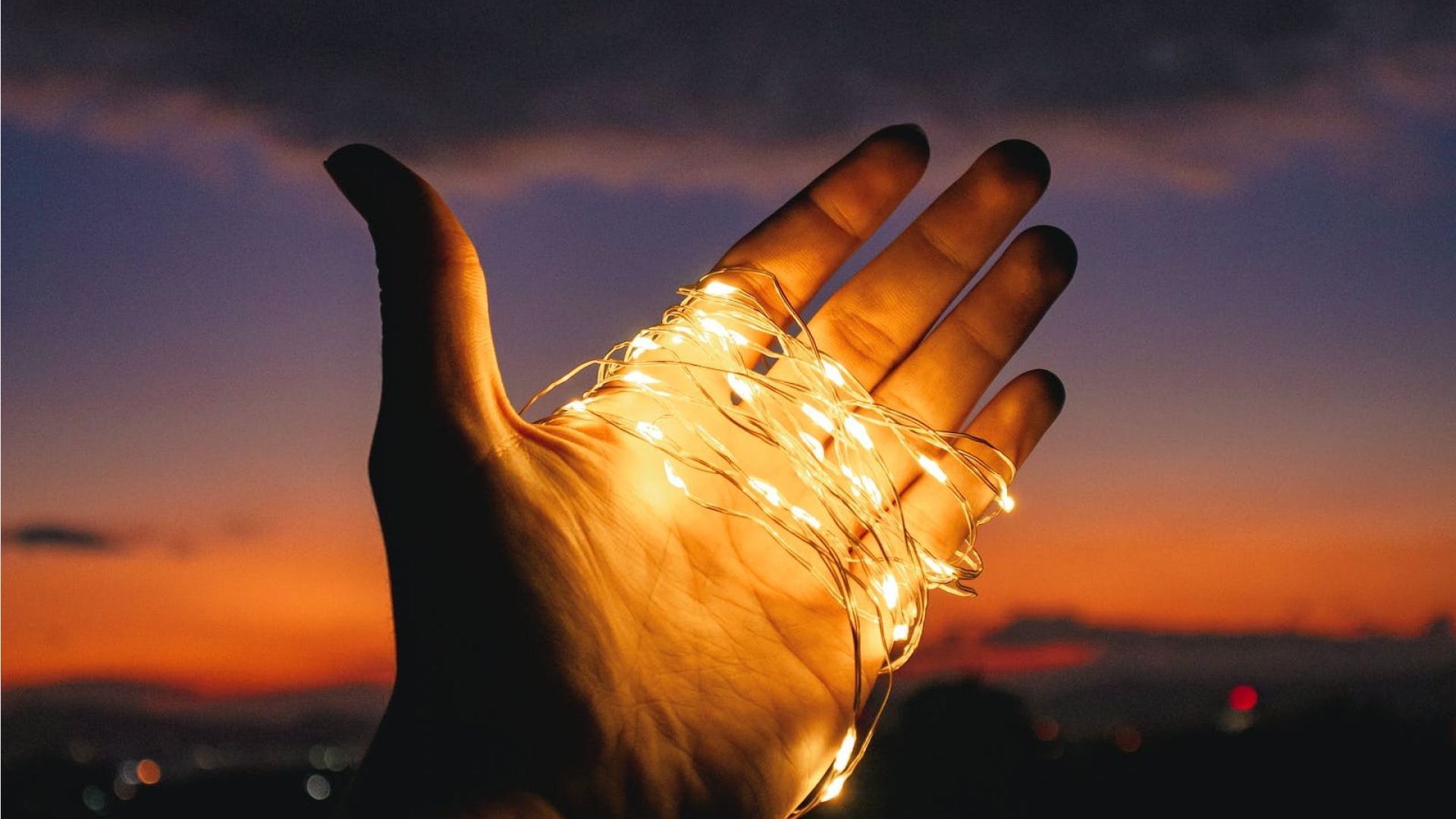Article
Winning Together: How Exceptional Leaders Build Unstoppable Teams
December 27, 2024

Try to imagine a team so finely tuned that their collaboration feels almost magical. Over the last 40 years I’ve seen a few that stunned me with their effectiveness. Deadlines were met with precision, challenges are tackled with creativity, and morale was high. These aren’t just happy accidents; they are the product of deliberate, disciplined leadership. But what is it that these exceptional leaders do differently?
To explore what made leaders great at facilitating teamwork, I looked at the leaders who were rated the highest on overall leadership effectiveness and who were also rated as outstanding in building teams. After analyzing their 360 ratings, coworker comments and personality test scopes, I discovered a fascinating pattern. Behind every high-performing team lies six key themes that define how leaders inspire trust, build connection, and foster productivity. Beneath these themes are twelve distinct personality traits and behaviors—the true underpinnings of their success. Let’s dive into what makes these leaders exceptional, how their teams thrive, and what you can take away to transform your own leadership style.
The Catalyst: Fostering Collaboration and Inclusiveness
At the heart of every great team lies a foundation of collaboration. The best leaders understand that inclusiveness is not a buzzword; it’s the lifeblood of a successful group. These leaders create an environment where everyone feels they have a voice and a stake in the team’s success. Think of it like orchestrating a symphony—each instrument unique, but all working in harmony.
One leader I worked with described it this way: “I don’t just want my team to be good at their jobs. I want them to feel good about their contributions.” And it works. When people feel included, they give their best—not because they must, but because they want to.
Inclusive leadership goes beyond meetings. These leaders actively ensure diverse perspectives are not just heard but valued. One executive shared how they intentionally sought input from junior employees, creating a reverse mentoring system to learn from younger team members. This approach not only bridged generational gaps but sparked innovative solutions.
A remarkable example came from a retail company where the CEO spent an entire week working alongside employees at every level. This not only provided invaluable insights into operations but also inspired a wave of new ideas from employees who felt truly seen and valued.
The Power of Empowerment: Developing Team Members
“Leadership isn’t about control; it’s about empowerment.” That’s the mantra of the best leaders. They don’t micromanage; they mentor. They know their job isn’t to do the work for their team but to remove barriers so their team can shine.
A leader’s ability to delegate isn’t just about trust; it’s about fostering growth. By assigning stretch tasks and providing support, they push their people to develop new skills and, in turn, confidence.
One executive I coached took this approach to heart. When a junior manager expressed interest in leading a high-stakes project, the leader’s instinct was to say, “You’re not ready yet.” Instead, they said, “Let’s prepare you.” The manager not only succeeded but went on to take on bigger roles, crediting that opportunity as a turning point.
Empowerment also requires patience. A seasoned leader shared how they once held weekly one-on-ones with an underperforming employee, not to micromanage but to provide consistent coaching. Over time, that employee became a top performer.
Empowerment isn’t just about developing individuals—it’s about creating a culture where everyone lifts each other. In one team, a leader implemented peer mentoring, pairing experienced members with newer hires. The result? Faster onboarding and a stronger sense of camaraderie.
The Core: Creating a Positive Team Culture
Culture isn’t what’s written in your mission statement; it’s what your team feels every day. Exceptional leaders understand that positivity fuels productivity. They celebrate wins, address failures with empathy, and create an environment where people feel valued.
One leader’s approach stands out. Instead of reprimanding a team member who made a costly mistake, they called a “win-learn” meeting. They asked the team to reflect on what went well despite the setback and what could be improved. It was never about blame; it was about building resilience and trust.
Positivity doesn’t mean ignoring challenges. Another leader made it a practice to end every week by asking their team, “What’s one thing that frustrated you this week, and how can we fix it?” This proactive approach addressed problems head-on while maintaining morale.
Exceptional leaders also understand the power of symbolic gestures. One executive started a tradition of hand-delivering birthday cards to every team member. This small act created a deep sense of connection and loyalty.
The Glue: Effective Communication
Communication is the thread that ties a team together. The best leaders are master communicators, ensuring everyone knows not just what to do but why it matters. They listen as much as they speak, creating a two-way street of ideas and feedback. One leader implemented “feedback Fridays,” where team members could share thoughts—anonymously or openly—on what was working and what wasn’t. Over time, this openness became a cornerstone of the team’s success.
But effective communication goes beyond feedback. It’s also about clarity. A leader I coached used a simple tool: at the end of each meeting, they asked team members to repeat back key takeaways. This ensured alignment and minimized misunderstandings.
Leaders who excel at communication also create forums for informal interaction. One manager set up monthly coffee chats with random pairs of team members, fostering connections and breaking down silos.
The Art of Strengths: Recognizing Individual Talents
Imagine a soccer team where everyone plays goalie. Absurd, right? Yet so many leaders fail to recognize and utilize their team’s diverse strengths. Great leaders, however, are like talent scouts—always identifying who’s best at what and positioning them to succeed.
One leader I coached used a strengths matrix to map out their team’s unique abilities. Not only did this improve performance, but it also boosted morale as people felt their skills were truly valued.
Another example comes from a tech startup where the CEO reorganized teams based on personality assessments. By aligning roles with individual strengths, they saw a 30% increase in productivity.
The Inspiration: Leading by Example
Actions speak louder than words and nowhere is this truer than in leadership. The most inspiring leaders hold themselves to the same standards they expect of others. Their dedication is contagious, setting the tone for the entire team.
One leader would never ask their team to work late without rolling up their own sleeves. “If I’m asking for extra effort, they need to see I’m all in too,” they explained. The result? A team that consistently went above and beyond because they saw their leader doing the same.
Another leader shared how they publicly admitted to their mistakes. “Owning my failures shows my team that it’s safe to take risks,” they said. This humility fostered a culture of innovation and psychological safety.
The Traits That Make It All Possible
Now, let’s pull back the curtain on the nine traits that underpin these leadership themes. These traits aren’t innate; they’re cultivated. Here are a few of the most impactful:
To explore what made leaders great at facilitating teamwork, I looked at the leaders who were rated the highest on overall leadership effectiveness and who were also rated as outstanding in building teams. After analyzing their 360 ratings, coworker comments and personality test scopes, I discovered a fascinating pattern. Behind every high-performing team lies six key themes that define how leaders inspire trust, build connection, and foster productivity. Beneath these themes are twelve distinct personality traits and behaviors—the true underpinnings of their success. Let’s dive into what makes these leaders exceptional, how their teams thrive, and what you can take away to transform your own leadership style.
The Catalyst: Fostering Collaboration and Inclusiveness
At the heart of every great team lies a foundation of collaboration. The best leaders understand that inclusiveness is not a buzzword; it’s the lifeblood of a successful group. These leaders create an environment where everyone feels they have a voice and a stake in the team’s success. Think of it like orchestrating a symphony—each instrument unique, but all working in harmony.
One leader I worked with described it this way: “I don’t just want my team to be good at their jobs. I want them to feel good about their contributions.” And it works. When people feel included, they give their best—not because they must, but because they want to.
Inclusive leadership goes beyond meetings. These leaders actively ensure diverse perspectives are not just heard but valued. One executive shared how they intentionally sought input from junior employees, creating a reverse mentoring system to learn from younger team members. This approach not only bridged generational gaps but sparked innovative solutions.
A remarkable example came from a retail company where the CEO spent an entire week working alongside employees at every level. This not only provided invaluable insights into operations but also inspired a wave of new ideas from employees who felt truly seen and valued.
The Power of Empowerment: Developing Team Members
“Leadership isn’t about control; it’s about empowerment.” That’s the mantra of the best leaders. They don’t micromanage; they mentor. They know their job isn’t to do the work for their team but to remove barriers so their team can shine.
A leader’s ability to delegate isn’t just about trust; it’s about fostering growth. By assigning stretch tasks and providing support, they push their people to develop new skills and, in turn, confidence.
One executive I coached took this approach to heart. When a junior manager expressed interest in leading a high-stakes project, the leader’s instinct was to say, “You’re not ready yet.” Instead, they said, “Let’s prepare you.” The manager not only succeeded but went on to take on bigger roles, crediting that opportunity as a turning point.
Empowerment also requires patience. A seasoned leader shared how they once held weekly one-on-ones with an underperforming employee, not to micromanage but to provide consistent coaching. Over time, that employee became a top performer.
Empowerment isn’t just about developing individuals—it’s about creating a culture where everyone lifts each other. In one team, a leader implemented peer mentoring, pairing experienced members with newer hires. The result? Faster onboarding and a stronger sense of camaraderie.
The Core: Creating a Positive Team Culture
Culture isn’t what’s written in your mission statement; it’s what your team feels every day. Exceptional leaders understand that positivity fuels productivity. They celebrate wins, address failures with empathy, and create an environment where people feel valued.
One leader’s approach stands out. Instead of reprimanding a team member who made a costly mistake, they called a “win-learn” meeting. They asked the team to reflect on what went well despite the setback and what could be improved. It was never about blame; it was about building resilience and trust.
Positivity doesn’t mean ignoring challenges. Another leader made it a practice to end every week by asking their team, “What’s one thing that frustrated you this week, and how can we fix it?” This proactive approach addressed problems head-on while maintaining morale.
Exceptional leaders also understand the power of symbolic gestures. One executive started a tradition of hand-delivering birthday cards to every team member. This small act created a deep sense of connection and loyalty.
The Glue: Effective Communication
Communication is the thread that ties a team together. The best leaders are master communicators, ensuring everyone knows not just what to do but why it matters. They listen as much as they speak, creating a two-way street of ideas and feedback. One leader implemented “feedback Fridays,” where team members could share thoughts—anonymously or openly—on what was working and what wasn’t. Over time, this openness became a cornerstone of the team’s success.
But effective communication goes beyond feedback. It’s also about clarity. A leader I coached used a simple tool: at the end of each meeting, they asked team members to repeat back key takeaways. This ensured alignment and minimized misunderstandings.
Leaders who excel at communication also create forums for informal interaction. One manager set up monthly coffee chats with random pairs of team members, fostering connections and breaking down silos.
The Art of Strengths: Recognizing Individual Talents
Imagine a soccer team where everyone plays goalie. Absurd, right? Yet so many leaders fail to recognize and utilize their team’s diverse strengths. Great leaders, however, are like talent scouts—always identifying who’s best at what and positioning them to succeed.
One leader I coached used a strengths matrix to map out their team’s unique abilities. Not only did this improve performance, but it also boosted morale as people felt their skills were truly valued.
Another example comes from a tech startup where the CEO reorganized teams based on personality assessments. By aligning roles with individual strengths, they saw a 30% increase in productivity.
The Inspiration: Leading by Example
Actions speak louder than words and nowhere is this truer than in leadership. The most inspiring leaders hold themselves to the same standards they expect of others. Their dedication is contagious, setting the tone for the entire team.
One leader would never ask their team to work late without rolling up their own sleeves. “If I’m asking for extra effort, they need to see I’m all in too,” they explained. The result? A team that consistently went above and beyond because they saw their leader doing the same.
Another leader shared how they publicly admitted to their mistakes. “Owning my failures shows my team that it’s safe to take risks,” they said. This humility fostered a culture of innovation and psychological safety.
The Traits That Make It All Possible
Now, let’s pull back the curtain on the nine traits that underpin these leadership themes. These traits aren’t innate; they’re cultivated. Here are a few of the most impactful:
- Social Skill:
Leaders build trust and rapport effortlessly. One colleague noted, “She makes you feel like your ideas and contributions matters.”
How to Develop It: Schedule regular one-on-one time with team members to understand their motivations, aspirations, and challenges. Practice active listening by asking open-ended questions and reflecting on their responses. Attend networking events or join professional groups to practice building rapport with diverse individuals. - Emotional Grounding:
They remain calm under pressure. A team member once said, “He’s unshakeable, even in a crisis.”
How to Develop It: When tensions rise, pause and take a deep breath before reacting. Practice mindfulness techniques like meditation to improve emotional regulation. Seek feedback from trusted colleagues on how you handle stressful situations and work on areas for improvement. - Consistency:
Reliable leaders build trust. “She consistently communicates her expectations clearly, follows through on her commitments, and ensures everyone is on the same page, which makes it easy to trust and rely on her leadership”
How to Develop it” Start small by always following through on meeting deadlines. Create a personal system for tracking commitments and set reminders to ensure you meet them. Regularly communicate progress on tasks to build trust and reliability. - Adaptability:
They see change not as a threat but as an opportunity. “"She adapts to new challenges by bringing together cross-functional teams to innovate and execute with alignment."
How to Develop It: When a new challenge arises, ask, “How can we turn this into an advantage?” Shift your mindset to see obstacles as opportunities for growth and involve your team in brainstorming innovative ways to address the situation. Encourage flexibility and experimentation, fostering a culture that thrives on change and innovation. - Trusting Nature:
Leaders empower others by demonstrating faith in their team’s abilities. Trust builds confidence and accountability. One leader was described as “someone who trusts you to figure it out but has your back if you need help.”
How to Develop It: Start delegating significant responsibilities to team members, allowing them autonomy while remaining available for support. Resist the urge to micromanage and instead focus on outcomes. Celebrate when team members succeed with delegated tasks. - Achievement Orientation:
These leaders are driven and inspire others to reach ambitious goals. They lead with enthusiasm and pride, creating a culture of high standards and collective success. One team member noted, “Her passion for collaboration and commitment to excellence motivates everyone around her.”
How to Develop It: : Share your enthusiasm for team wins and set clear, challenging goals that energize the team. Break down larger objectives into measurable milestones and regularly track progress. Encourage a growth mindset by focusing on effort and improvement rather than just results. - Ethical Integrity:
Leaders with strong moral compasses earn respect and loyalty. They foster an environment of fairness and transparency, which cultivates trust. One observation: "He is totally trustworthy and creates a very healthy team environment by leading with integrity and setting an example of fairness and respect for everyone."
How to Develop It: Consistently align decisions with your values and ensure your actions reinforce a culture of fairness. Create a personal code of ethics and refer to it when facing difficult decisions. Be transparent about your reasoning behind choices, especially when they affect the team. - Organizational Skills:
Exceptional leaders bring structure and clarity to chaos. They prioritize tasks effectively and ensure their teams stay focused on what matters most. A team member highlighted, “He provides clear structure and expectations, which keeps us aligned and productive.”
How to Develop It : Implement task management software or shared project boards to clarify priorities and keep everyone aligned. Develop a system for categorizing tasks by urgency and importance. Regularly review and update your organizational systems to ensure they remain effective. - Inspirational Vision:
These leaders articulate compelling goals and rally their teams around a shared purpose. They can energize and uplift even during challenging times. One person said, “He always reminds us of why our work matters, and that keeps us motivated.”
How to Develop It: Regularly communicate your vision and tie day-to-day efforts back to the bigger picture. Practice storytelling techniques to make your vision more compelling and relatable. Seek out and share examples of how the team's work is making a tangible impact.
share this
Related Articles
Related Articles

The Nicest Boss in the World He was adored. He remembered birthdays, checked in on people’s families, and stayed late helping fix slides no one asked him to touch. His team called him “the best boss we’ve ever had.” He was also running on fumes. Behind the warm smile was a leader quietly burning out — drowning in everyone else’s problems, too empathetic for his own good. If you’re a leader who prides yourself on caring deeply, this might sting a little: empathy, taken too far, becomes control in disguise. Empathy’s Secret Shadow Empathy is essential for leadership. It builds loyalty, safety, and trust. But the same trait that makes people feel seen can also make them dependent. When you can’t tolerate someone else’s discomfort, you start protecting them from it. You step in to fix, to soothe, to rescue. It looks noble. It feels generous. But it quietly steals agency — theirs and yours. Your team stops growing because you’re doing their emotional labor. You stop leading because you’re managing feelings instead of outcomes. That’s the hidden cost of care. The Emotional Guilt Loop Over-empathetic leaders live in a constant tug-of-war between compassion and guilt. They think: “They’re already stretched — I can’t pile more on.” “If I push harder, I’ll seem uncaring.” “I’ll just do it myself; it’s easier.” Sound familiar? That’s not empathy anymore. That’s guilt masquerading as kindness. And guilt makes terrible business decisions. Because guilt doesn’t guide you toward what’s right. It just steers you away from what feels uncomfortable. A Founder’s Story One founder I coached, let’s call her Lina, led with heart. She built her company around “people first.” And she meant it. But somewhere along the way, “people first” turned into “me last.” She couldn’t say no. She kept saving underperformers, approving vacations during crunch time, rewriting others’ work to spare them stress. Her team adored her — until they didn’t. Because beneath her helpfulness was quiet resentment. And resentment always leaks. The breakthrough came when she realized something simple but hard: “I was protecting people from learning the hard parts of growth.” That’s when she started leading again instead of parenting. When Caring Becomes Control Here’s the paradox: the more you care, the more you risk over-controlling. You jump in to fix not because you don’t trust them, but because you feel for them. It’s empathy turned inward — I can’t stand watching them struggle. But leadership isn’t about eliminating discomfort. It’s about using it wisely. People grow by stretching, not by being spared. When you save someone from every failure, you’re also saving them from competence. The Biology of Burnout Chronic empathy triggers chronic stress. When you absorb other people’s emotions all day, your nervous system never gets a break. You start mirroring everyone’s anxiety like an emotional amplifier. Your brain thinks you’re in crisis — even when you’re not. That’s why over-caring leaders are often the first to burn out. Their compassion becomes constant cortisol. The irony? The leaders who want to create safety for others end up unsafe themselves. How to Care Without Carrying Feel, then filter. It’s okay to feel someone’s frustration. Just don’t keep it. Ask: “Is this mine to hold?” Help through accountability. Say, “I know this is tough, and I also need you to take ownership.” The and matters. Let discomfort be developmental. When a team member struggles, resist rescuing. Stay present, not protective. Coach before you comfort. Instead of “Don’t worry,” try, “What do you think your next move is?” Reframe empathy as empowerment. Caring isn’t about absorbing pain; it’s about believing people can handle it. Funny but True One exec I worked with told me, “Every time I stop helping, I feel like a jerk.” I said, “No — you feel like a leader. It just takes a while to tell the difference.” He laughed and said, “So… you’re telling me leadership feels bad at first?” I said, “Exactly. Growth always does.” The Cultural Ripple Effect When leaders overfunction, teams underfunction. When leaders hold space instead of taking space, teams rise. Empathy should expand others, not consume you. The healthiest cultures balance care and candor — support and stretch. They normalize struggle as part of the process instead of something to be hidden or rescued. That’s what real compassion looks like in motion. The Maturity of Tough Empathy Empathy without boundaries is exhaustion. Empathy with boundaries is wisdom. The mature version of empathy doesn’t say, “I’ll protect you.” It says, “I believe you can handle this — and I’ll walk beside you while you do.” That’s not cold. That’s developmental. Your Challenge This Week Notice where you’re rescuing someone instead of coaching them. Pause before you step in. Ask yourself, Am I helping because they need it — or because I need to feel helpful? Then take one small risk: let them handle it. They’ll probably surprise you. And you’ll feel lighter than you have in months. Final Word Caring is beautiful. It’s what makes you human. But unchecked empathy turns leaders into emotional pack mules — carrying what was never theirs to bear. Real leadership is still full of heart. It just remembers that compassion without accountability isn’t love. It’s fear. And the moment you stop rescuing everyone, you finally start freeing them — and yourself.s)

The Smart Leader’s Blind Spot It’s strange how often the smartest people make the worst decisions under pressure. They don’t lose IQ. They lose perspective. I’ve seen this happen more times than I can count. A sharp, decisive executive starts second-guessing every move. They overanalyze, overwork, and overcontrol — all in the name of being “thorough.” They think they’re being rational. But underneath the spreadsheets and meetings is something far less logical. It’s fear. The Fear That Doesn’t Look Like Fear We think of fear as panic — sweating, shaking, obvious. But most leadership fear hides behind competence. It shows up as perfectionism, busyness, overcommitment, indecision. It sounds like, “Let’s get more data.” “Let’s not rush this.” “Let’s keep this one close.” That’s not analysis. That’s avoidance with a better vocabulary. When fear runs the show, the goal subtly shifts from making the right decision to avoiding the wrong one. And those two things are worlds apart. The Cost of Fear-Based Leadership When leaders operate from fear, everything tightens. They stop listening. They rush to defend. They play small when the company needs boldness. They keep people who are loyal over people who are competent — because loyalty feels safer. And here’s the real tragedy: the team starts copying the fear. They become cautious, compliant, quiet. Pretty soon, no one’s leading anymore. They’re all managing risk — mostly emotional risk. A CEO’s Moment of Truth One CEO I coached — brilliant, confident, deeply human — was terrified of being wrong in front of his board. He masked it well. On the outside: decisive. Inside: a constant hum of anxiety. After a tough quarter, he admitted, “I realized half my decisions weren’t based on strategy — they were based on protecting my image.” That moment of honesty was the start of his maturity curve. Once he could name the fear, it stopped running his show. He didn’t become fearless. He became aware. And awareness is what turns reaction into wisdom. Why Fear Feels Safer Than Clarity Fear has a strange way of convincing us it’s caution. Caution whispers, “Slow down and look.” Fear screams, “Don’t move.” The first sharpens judgment. The second paralyzes it. And the more we listen to fear, the more it disguises itself as prudence. That’s why emotional maturity isn’t about suppressing fear. It’s about being able to say, “Ah, that’s fear talking — not fact.” How Fear Distorts the Mind Here’s what happens when fear hijacks leadership: Tunnel vision: You fixate on the immediate threat and forget the big picture. Confirmation bias: You start looking for data that validates your anxiety. Short-termism: You make safe decisions that feel good now and cause pain later. Blame shifting: You protect your ego by pushing ownership outward. The mind gets smaller. The leader gets reactive. The company gets stuck. The Maturity Shift Emotional maturity isn’t about being unshakable. It’s about staying curious in the presence of fear. Mature leaders don’t pretend they’re fearless. They just don’t let fear make the decisions. They pause, breathe, and ask, “What part of this is data, and what part is my insecurity talking?” That single question can change everything. A Founder’s Story A founder I worked with once said, “I’m not afraid — I just have high standards.” But as we unpacked it, he realized those “high standards” were actually a way to control outcomes. He feared disappointment — his own and others’. When he finally stopped trying to protect his reputation and started protecting his clarity, his decisions got faster and cleaner. The business didn’t just grow — it started breathing again. Because when you stop trying to look right, you finally have room to be right. Funny, But True I once asked a CEO what he’d do differently if he weren’t afraid of failing. He said, “Probably the same things I’m doing now — just with less Advil.” That’s the thing: most leaders already know what to do. Fear just makes it hurt more. How to Lead Without Fear (Even When It’s There) Name it early. The sooner you recognize fear, the less power it has. Ask yourself, “What’s the story fear’s telling me right now?” Reframe mistakes as tuition. You’ll still pay for errors — might as well learn something from them. Separate identity from outcome. A bad decision doesn’t mean a bad leader. It means a leader who’s still learning — like everyone else. Keep one truth-teller nearby. Someone who loves you enough to tell you when you’re acting from ego. Practice micro-bravery. Tell one hard truth a day. Say “I don’t know” once a week. Let discomfort become strength training. The Paradox of Fear Fear doesn’t make you weak. It means you care. But if you never face it, it becomes your compass — and it always points backward. Courage, maturity, clarity — they’re not opposites of fear. They’re what happen when you stop running from it. Your Challenge This Week Next time you feel that knot in your stomach — before a board meeting, a tough conversation, a high-stakes call — pause. Ask yourself: What am I afraid might happen? Then ask: What might happen if I act from clarity instead of fear? That’s not therapy. That’s leadership hygiene. Final Word The mark of maturity isn’t fearlessness. It’s self-awareness. You can’t control your fear. But you can choose whether it sits in the driver’s seat or the passenger’s. Great leaders don’t wait for fear to disappear. They lead with it beside them — quietly, respectfully — but never in charge.

The Charisma Illusion Charisma gets all the press. It fills conference rooms, wins funding rounds, and dominates the LinkedIn highlight reel. We treat it like the gold standard of leadership — as if volume equals vision. But charisma is a sugar high. It spikes energy, then crashes trust. Composure, on the other hand — quiet, grounded, centered composure — is the kind of influence that lasts. It doesn’t light up a room; it settles one. When things go sideways, it’s not the charismatic leader people look for. It’s the calm one. The Crisis Test Picture this. The product just failed. The client’s furious. Your team’s pacing like trapped cats. Two leaders walk in. One storms into action — loud, fast, “What the hell happened here?” The other walks in slowly, looks around, and says, “Okay, let’s breathe. What do we know so far?” The first one gets attention. The second one gets results. That’s emotional geometry — the calmest person in the room reshapes everyone else’s state. Why Calm Is the Real Power When you stay composed, you’re not just managing your emotions — you’re regulating the entire system. Here’s the neuroscience behind it: people mirror the nervous system of whoever has the most authority. If you’re grounded, they sync to your rhythm. If you’re frantic, they sync to that instead. You don’t need to lecture anyone on resilience. You just have to model it. It’s not charisma that makes people trust you; it’s the quiet sense that you’re not going to lose your mind when things get hard. Charisma’s Half-Life Charisma is a spark. It can ignite a team — but if there’s no composure beneath it, the whole thing burns out. You’ve seen this movie before: the leader who rallies everyone with a passionate all-hands speech, then disappears into reaction mode when things get messy. Charisma without composure is like caffeine without sleep. You’re awake, but you’re not steady. Composure doesn’t get the applause. It gets the loyalty. A Founder’s Story One founder I worked with — I’ll call him David — was known for being a “high-voltage” guy. He could pitch an investor, fire up a crowd, or talk anyone into anything. But his team? They were walking on eggshells. His energy filled every room, but it left no oxygen for anyone else. During one session, I asked, “When you raise your voice, what happens to theirs?” He went quiet. That was the moment he understood that his passion — the thing he was most proud of — had become the team’s anxiety. A year later, his team described him differently: “He’s still intense, but steady. We trust him more now.” He didn’t lose charisma; he layered it with composure. The Calm Before the Influence Here’s what composure actually looks like: You listen longer. Because real influence starts with attention, not argument. You breathe before reacting. That pause isn’t weakness; it’s power management. You let silence do the work. Charisma fills every space; composure creates space for others to step in. You own your tone. You realize your sighs, your speed, your face — they’re all communication tools whether you intend them or not. You choose steadiness over certainty. People don’t need you to know everything. They just need to know you’re okay not knowing. Funny But True A client once told me, “When I’m calm in a meeting, people assume I’m hiding something.” I said, “Good. Let them wonder.” That’s how unfamiliar calm has become. In some cultures, composure looks radical — even suspicious. But it’s exactly what people crave in a world that never shuts up. Why Charisma Is Easier (and More Addictive) Charisma gets feedback. You see the energy rise, you feel the applause. It’s visible. Composure feels invisible — until you lose it. No one thanks you for staying calm during a crisis. But they remember it when deciding whether to follow you into the next one. That’s why maturity in leadership means getting comfortable with the quiet wins — the meeting that didn’t spiral, the argument that didn’t happen, the team that stayed focused because you did. The Emotional Geometry in Practice Think of composure as geometry because emotions move through space. When you enter a room, you alter its emotional shape. If you radiate calm, people’s shoulders drop. Their thinking widens. They start contributing. If you radiate stress, the room contracts. People shrink. Ideas vanish. Influence isn’t what you say. It’s the energy field you create. Your Challenge This Week Before your next high-stakes meeting, pause outside the door. Take one deep breath and ask yourself: What energy does this room need from me right now? Then bring only that. Nothing more. You’ll be amazed how fast everything slows down when you do. Final Word Charisma captures attention. Composure builds trust. One is about how loudly you shine; the other is about how steadily you glow. The leader who can stay centered when everyone else is spinning doesn’t just have influence — they are the influence. And that’s the kind of power that never burns out.
STAY UP TO DATE
GET PATH'S LATEST
Receive bi-weekly updates from the church, and get a heads up on upcoming events.
Contact Us








